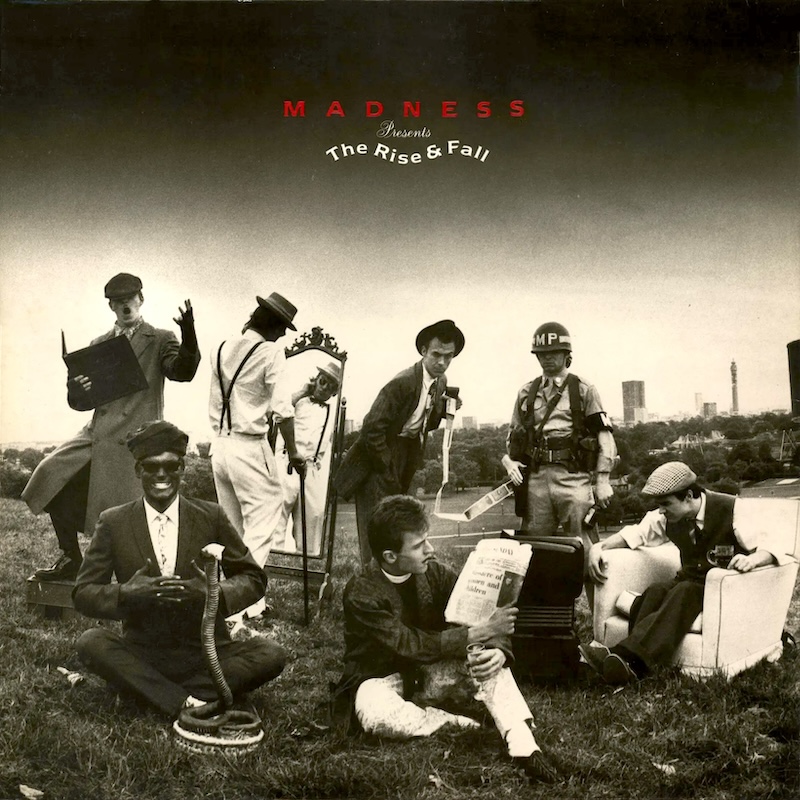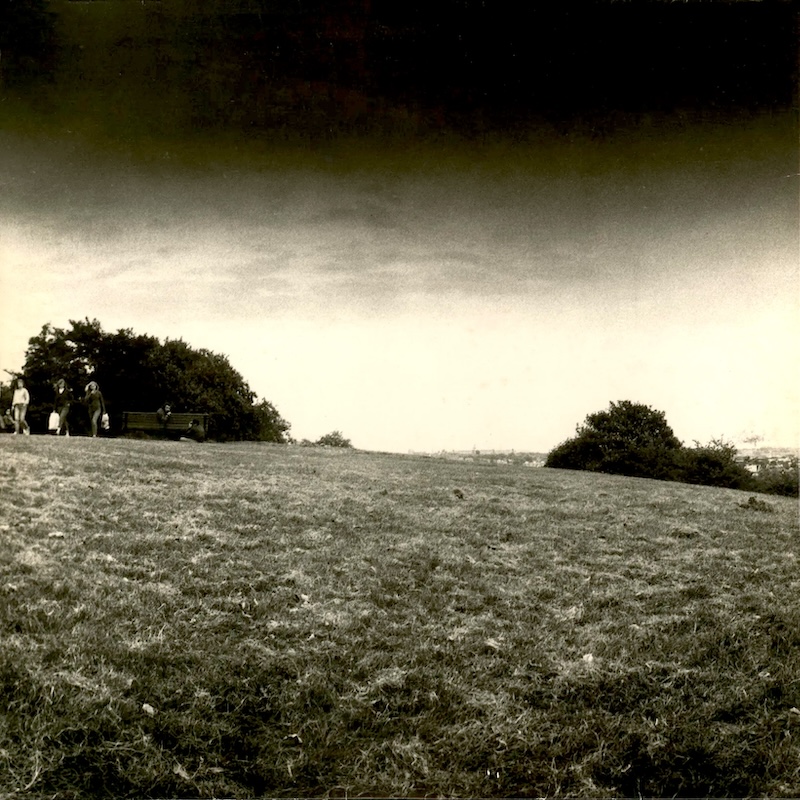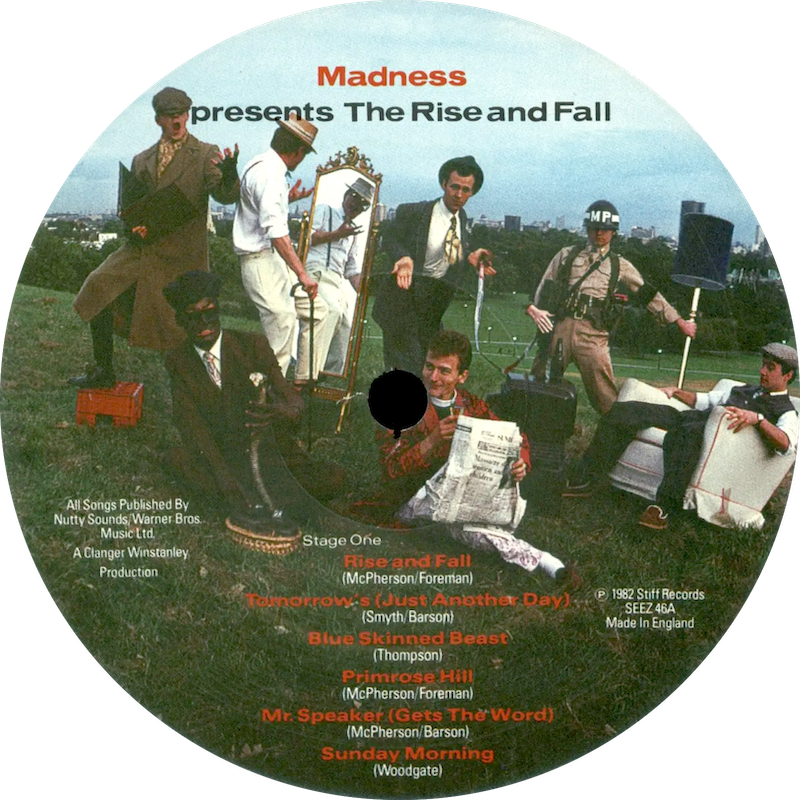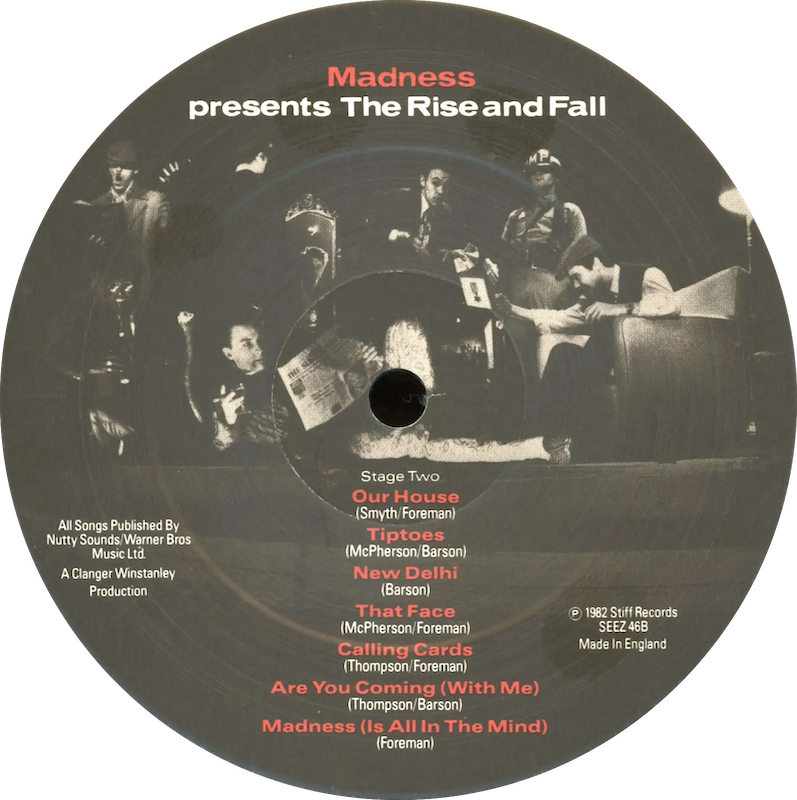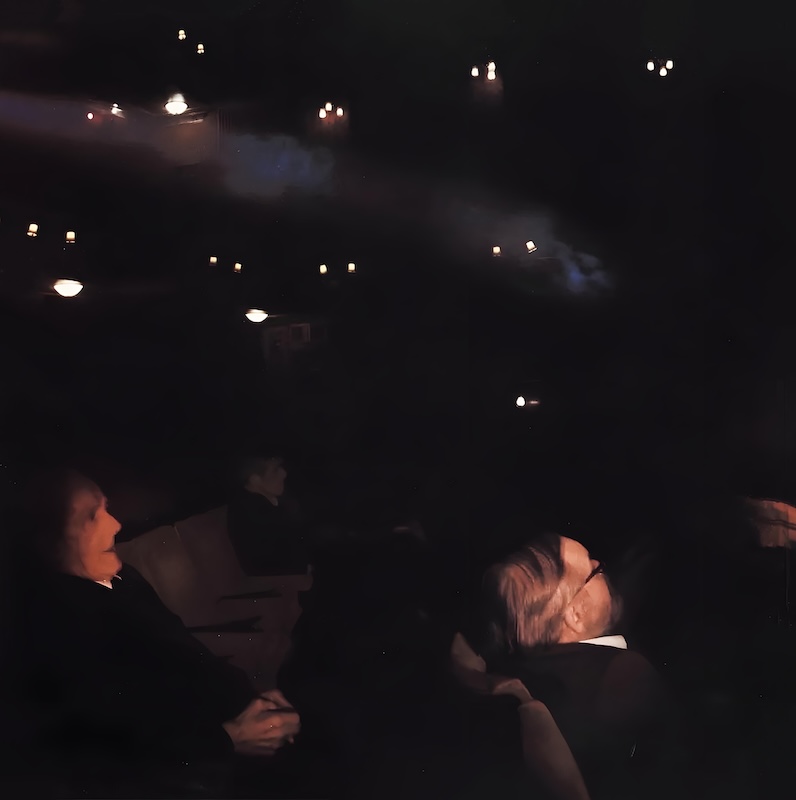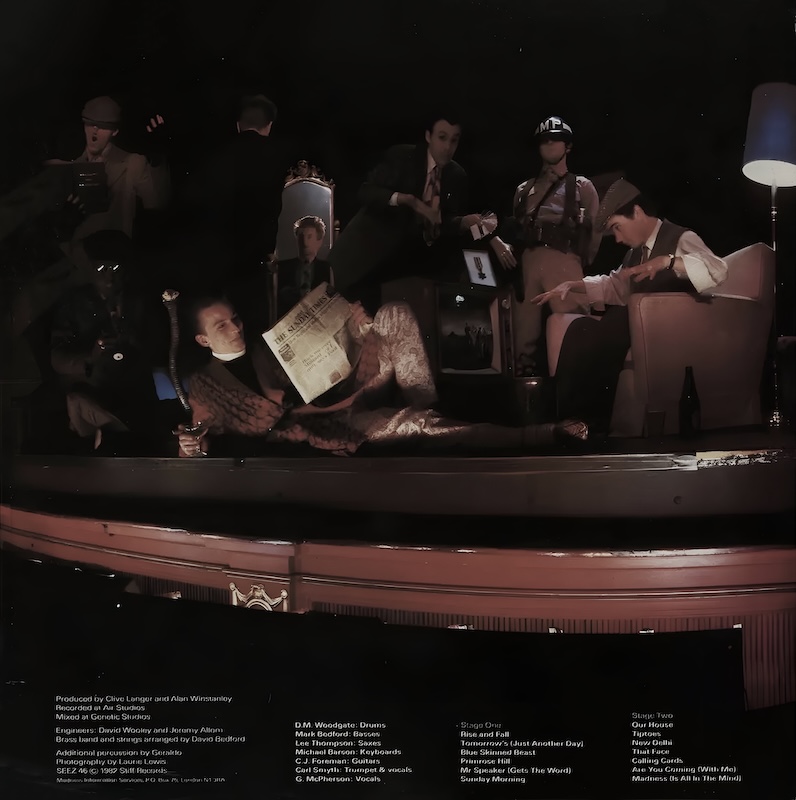
The Rise & Fall
OVERVIEW
Released on November 5, 1982, The Rise & Fall stands as a pivotal moment in the career of British band Madness. Issued through Stiff Records, it was their fourth studio album and marked a departure from the brash, light-hearted style of their earlier records. Known primarily for their place in the UK’s 2-Tone ska revival, Madness used this album to push beyond genre confines, embracing a more experimental sound that incorporated jazz, English music hall, Eastern musical elements, and pop melodies. What emerged was not only their most musically adventurous album to date but also one of the most critically acclaimed.
While still rooted in the upbeat energy that had defined their early success, The Rise & Fall introduced a richer and more reflective tone. Originally envisioned as a concept album centered on childhood nostalgia, the full concept was ultimately abandoned, though remnants of the idea are still evident. Tracks like the title song and the widely beloved “Our House” explore domesticity, memory, and the bittersweet nature of growing up. “Our House,” with its catchy chorus and sentimental lyrics, became the band’s only top 10 hit in the United States, peaking at No. 7, and remains one of their signature songs.
Musically, the album showcased a leap forward. Madness blended their ska roots with orchestral arrangements and international flair. Keyboardist Mike Barson, for instance, wrote the track “New Delhi” inspired by the Indian capital, adding an unexpected Eastern twist. Producer David Bedford contributed string and brass arrangements that enhanced the textural depth of tracks like “Madness (Is All in the Mind)” and “Sunday Morning.” This sonic evolution helped shed their image as the playful “Nutty Boys” and introduced a more nuanced, introspective band capable of thoughtful lyricism and sophisticated composition.
The production, handled once again by longtime collaborators Clive Langer and Alan Winstanley, was key in maintaining continuity while allowing for bold exploration. Though the band briefly entertained the idea of working with Trevor Horn, famed for his futuristic production style, they ultimately chose to stay with Langer and Winstanley, believing they best understood the band’s essence. Recorded at Air Studios, the album benefited from meticulous engineering by David Wooley and Jeremy Allom, while mastering by Arun Chakraverty ensured clarity in its varied instrumentation.
Critics and fans alike responded positively to this stylistic shift. NME praised the album as “the best Madness record,” and retrospective reviews have only deepened its reputation. AllMusic’s Stephen Thomas Erlewine described it as “recognizably Madness in sound and sensibility,” noting the band’s successful blend of experimental ambition and pop accessibility. It’s frequently cited as their most complete and mature work, earning a spot in the book 1001 Albums You Must Hear Before You Die.
Another notable aspect of The Rise & Fall was its subtle entry into political commentary. While Madness had previously avoided overt political themes, the B-side track “Blue Skinned Beast” took a satirical jab at Prime Minister Margaret Thatcher’s handling of the Falklands War. This marked a significant development, signaling that the band was not only growing musically but also engaging more deeply with the world around them.
Despite not being officially released as an album in the United States, tracks from The Rise & Fall made their way into American ears through the 1983 compilation Madness, which featured “Our House” prominently. This helped the band build a modest following stateside, although their primary legacy remains firmly rooted in British pop history. The album cover, depicting London’s Primrose Hill with the BT Tower in the background, subtly reinforces its themes of memory and place, grounding the music in a specific cultural and emotional landscape.
Today, The Rise & Fall is celebrated not just for its hit singles but for the way it captured a band in transition—embracing maturity without abandoning its playful spirit. Its enduring popularity has led to multiple reissues, including a 2010 expanded edition packed with bonus content. More than four decades later, it remains a testament to Madness’s creative ambition and a milestone in British pop music’s evolution.
SINGLES
| Cover | Title | Released |
|---|---|---|
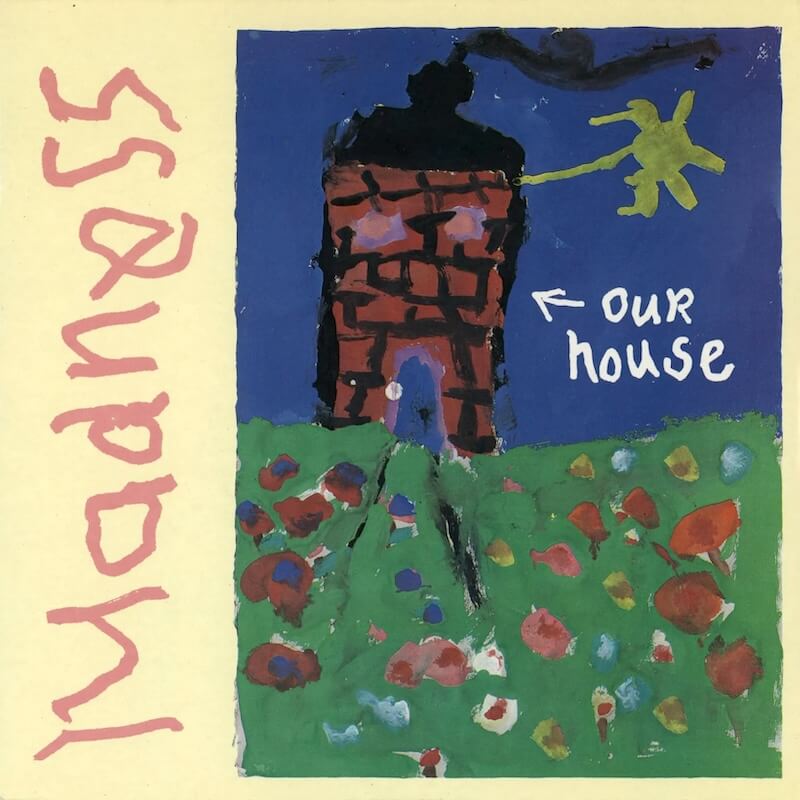 |
Our House | 11/15/1982 |
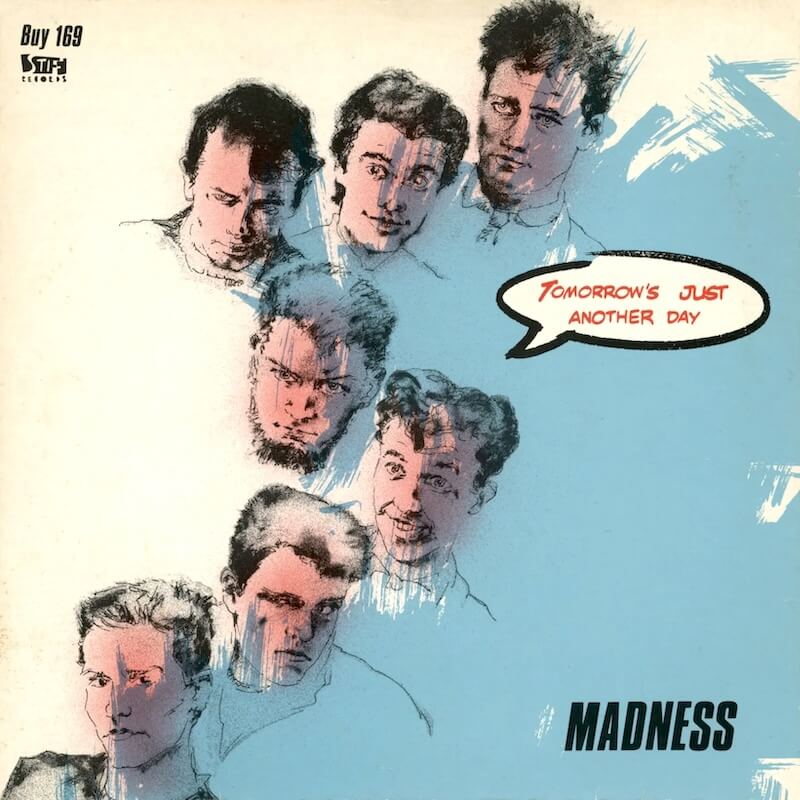 |
Tomorrow's (Just Another Day) / Madness (Is All In The Mind) | 02/07/1983 |
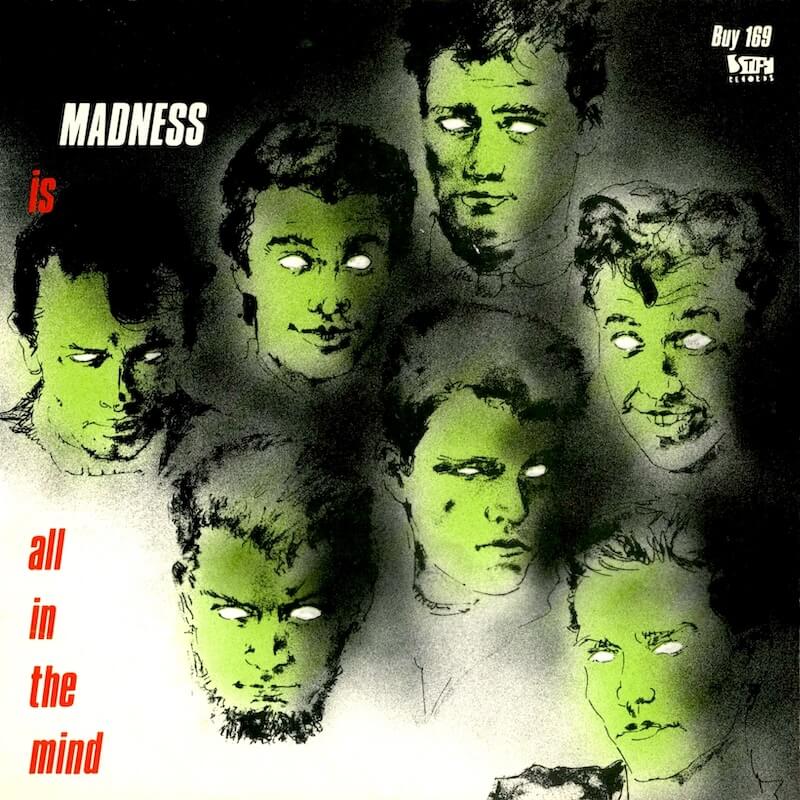 |
Tomorrow's (Just Another Day) / Madness (Is All In The Mind) | 02/07/1983 |
RELEASE DETAILS
TRACK LISTING
| Disc | Position | Track | Version | Duration |
|---|---|---|---|---|
| 1 | A1 | Rise And Fall | 3:17 | |
| 1 | A2 | Tomorrow’s (Just Another Day) | 3:11 | |
| 1 | A3 | Blue Skinned Beast | 3:23 | |
| 1 | A4 | Primrose Hill | 3:36 | |
| 1 | A5 | Mr. Speaker (Gets The Word) | 3:01 | |
| 1 | A6 | Sunday Morning | 4:03 | |
| 1 | B1 | Our House | 3:23 | |
| 1 | B2 | Tiptoes | 3:30 | |
| 1 | B3 | New Delhi | 3:41 | |
| 1 | B4 | That Face | 3:40 | |
| 1 | B5 | Calling Cards | 2:20 | |
| 1 | B6 | Are You Coming (With Me) | 3:17 | |
| 1 | B7 | Madness (Is All in the Mind) | 2:53 |
CHART HISTORY
| Position Date | Position |
|---|---|
| 13/11/1982 | 13 |
| 20/11/1982 | 10 |
| 27/11/1982 | 19 |
| 04/12/1982 | 25 |
| 11/12/1982 | 18 |
| 18/12/1982 | 10 |
| 25/12/1982 | 11 |
| 01/01/1983 | 11 |
| 08/01/1983 | 11 |
| 15/01/1983 | 23 |
MUSICANS
| Musican | Instrument | Role | Credit |
|---|---|---|---|
| Mike Barson | Keyboards | Band | |
| Chris Foreman | Guitar | Band | |
| Lee Thompson | Saxophone | Band | |
| Mark Bedford | Bass | Band | |
| Daniel Woodgate | Drums | Band | |
| Graham McPherson | Vocals | Band | |
| Cathal Smyth | Vocals, Trumpet | Band | |
| Geraldo D'Arbilly | Percussion | Session Musician |
PRODUCTION CREDITS
| Role | Credited | Notes |
|---|---|---|
| Producer | Clive Langer | |
| Producer | Alan Winstanley | |
| Engineer | David Woolley | |
| Engineer | Jeremy Allom | |
| Recording Studio | Air Studios | |
| Mixing Facility | Rushent's Mansion | Genetic Studios |
| Orchestrator | David Bedford | Brass Band, Strings |
| Photographer | Laurie Lewis | Front Cover Photo |
| Graphic Design | Stiff Art Department | Original Graphic Design |
COPYRIGHT AND Licencing
| Ownership | Company | Notes |
|---|---|---|
| Copyright © | Stiff Records | |
| Phonographic Copyright ℗ | Stiff Records |
Representation
| Representation | Company | Notes |
|---|---|---|
| Record Label | Stiff Records | |
| Publisher | Nutty Sounds Ltd. | |
| Publisher | Warner Chappell Music Ltd. |
SHARE YOUR OWN RELEASE REVIEW WITH OUR COMMUNITY
References
Extensive efforts have been made to gather factual information and knowledge on madness from various sources and document them. These sources include publicly accessible websites, books and publications, historical artefacts, and other pertinent materials. As a result, a comprehensive index of resources has been compiled and integrated into the website. These resources, if relevant to this article, are listed below.
| Reference | Source |
|---|---|
| wikipedia.org | Website |
| discogs.com | Website |

